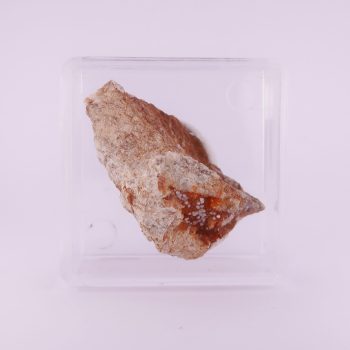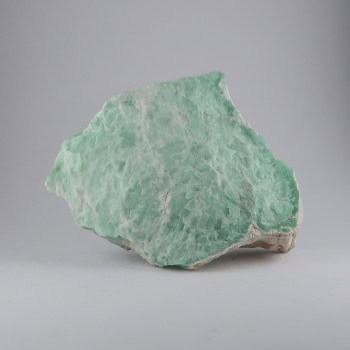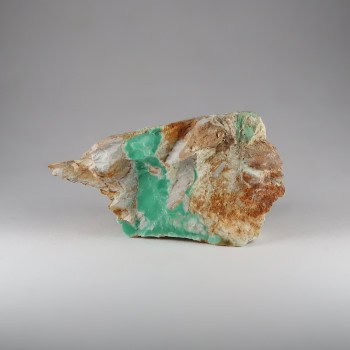Variscite
Variscite is a green phosphate mineral which is often confused with Turquoise – mainly due to a black veined form from Nevada, USA. It may be sold as ‘green Turquoise’ incorrectly.
Showing all 3 results
-

Variscite from Beauvoir quarry, France
£10.00 -

Variscite from Lucin Mining District, USA
£5.00 -

Variscite from Palazuelo de las Cuevas, Spain
Price range: £6.50 through £10.00
Information about Variscite
Variscite is a vibrant phosphate mineral known for its striking green to bluish-green color, often accompanied by white or darker vein-like patterns. Fine specimens may exhibit a subtle radiance due to their translucency.
Uses and History
Variscite is primarily used as a gemstone and ornamental material. Its striking colors and patterns make it popular for cabochons, beads, and decorative objects.
It is sometimes marketed as a replacement for Turquoise, but can also be missold as Turquoise – keep an eye out for that! It can be difficult to tell the difference.
A member of the variscite group, including
- Mansfieldite – AlAsO4 · 2H2O
- Scorodite – Fe3+AsO4 · 2H2O
- Strengite – FePO4 · 2H2O
- Variscite – AlPO4 · 2H2O
- Yanomamite – InAsO4 · 2H2O
Variscite was first described in 1837 and named after the Variscia region, the historical name for Vogtland in Germany, where it was initially discovered.
The mineral has been used in ornamental carvings and jewellery for centuries, especially by Native American cultures in the southwestern United States. Notable deposits have also been found in Utah, Australia, and Brazil.
Mineralogy
Green, emerald green, blue-green, colourless, white, brown, sometimes pink-red.
Hazards and Warnings
Easily confused with turquoise – I suppose this should be a financial warning.
Mineral collectors should wash their hands after handling specimens, to avoid any exposure to potential toxins.
Almost all rocks, minerals (and, frankly, almost all other substances on earth) can produce toxic dust when cutting, which can cause serious respiratory conditions including silicosis.
When cutting or polishing rocks, minerals, shells, etc, all work should be done wet to minimise the dust, and a suitable respirator or extraction system should be used.
Translations
Arabic:
Hindi:
Portuguese:
- Variscita
Bengali:
Indonesian:
Punjabi:
English:
- Variscite
Italian:
Russian:
- Варисцит
French:
Japanese:
- バリサイト
Spanish:
- Variscita
German:
- Variscit
Korean:
Thai:
- วาริสไซต์
Gujurati:
Mandarin Chinese:
- 磷铝石
Urdu:
